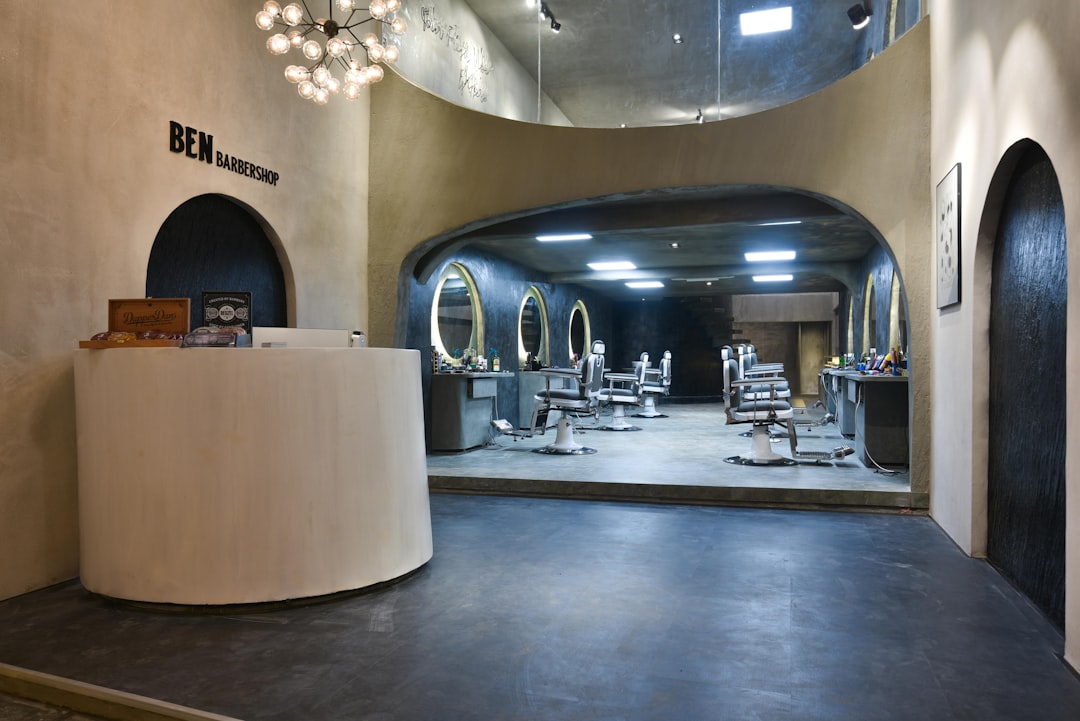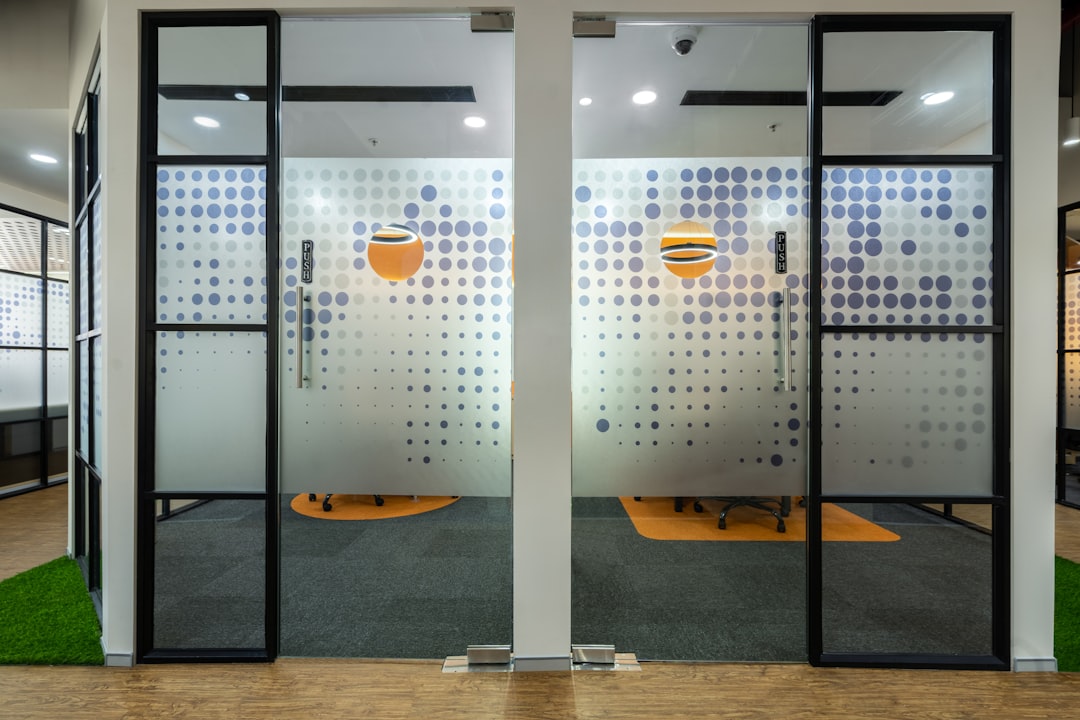

Engage prospects with a scan and streamline customer engagement with FREE QR code marketing tools by Sona – no strings attached!
Create a Free QR CodeFree consultation

No commitment

Engage prospects with a scan and streamline customer engagement with FREE QR code marketing tools by Sona – no strings attached!
Create a Free QR CodeFree consultation

No commitment
QR codes have evolved into a strategic tool for eye training centers, enabling seamless transitions from offline engagement to online action. These codes offer a frictionless, interactive method for accelerating patient conversions and boosting appointment bookings, while requiring no app downloads or complicated setup for staff or clients. The result is a faster, more accessible path from first interest to scheduled evaluation or program enrollment.
Many centers face the challenge of losing high-value prospects who may scan a flyer or browse a brochure but never input their information, resulting in missed follow-ups and incomplete segmentation. Traditional print forms offer little visibility into marketing tracking and actual engagement, creating gaps in both workflow and analytics. Moving these moments to QR-powered experiences solves a practical bottleneck: you capture interest in real time and record it for personalized follow-up, rather than hoping a visitor returns on their own.
Whether for educating clients, collecting reviews, or promoting vision improvement programs, deploying QR codes at every customer touchpoint helps eye training centers streamline onboarding, automate visitor identification, enrich CRM profiles, and ensure more personalized, measurable experiences for every client. As these digital touchpoints scale across your clinic, your team gains clear attribution for what drives bookings, therapy adherence, and long-term retention. For reputation building, guide patients to leave Google reviews.

QR codes bridge the gap between physical touchpoints and digital outcomes, making it easier to accelerate core business goals like new patient signups, follow-up compliance, and online form completions. When designed intentionally, they eliminate friction at moments that historically stall out, such as paper intake forms, manual rescheduling, or asking for reviews at checkout. The key is to connect each scan to a single, obvious action that advances the patient journey.
A persistent challenge for centers is missing high-intent prospects, such as those who take materials home, attend workshops, or inquire at the front desk but never formally submit their information. Without digital capture, these leads often go unpursued, representing lost opportunities for future engagement. Transitioning to digital through QR-enabled touchpoints activates these prospects, instantly connecting their scan with a clear call to action and enabling data capture without manual entry. Instead of printed brochures, paper interest sheets, or phone-driven scheduling, a scan can initiate self-booking, a pre-filled intake form, or a one-tap review.
This approach empowers eye training centers to modernize legacy processes by unlocking a frictionless and measurable patient engagement journey. Paper forms can become mobile-friendly digital workflows; phone calls can become self-service bookings; generic packets can become dynamic content journeys. Advanced QR platforms such as Sona QR can automate identification, journey tracking, and CRM enrichment at every stage, making it easier to ensure no high-fit lead is left behind.

Eye training centers face unique challenges in translating offline interest from educational seminars, community outreach, eye care advertising, or mailed promotions into booked appointments or completed vision therapy signups. One of the most significant barriers is the inability to track and follow up with anonymous prospects, including those who pick up a brochure at a school screening or attend an in-clinic demo but never volunteer their details. This lack of visibility means potential leads remain unknown and unpursued, which reduces the return on every marketing activity you run.
QR codes solve these problems by making every physical material actionable and measurable. A single scan can route a visitor to self-scheduling, a personalized assessment, or a short form that captures key contact information. If your center mails thousands of postcards each quarter, for example, a unique QR code on each batch can reveal which mailing list segments convert best, which copy earns the most scans, and what time of day your audience prefers to take action. This clarity supports smarter spend, better creative, and timelier interventions, aligning with offline attribution best practices.
Digital transformation through QR codes delivers more than convenience. It surfaces previously invisible engagement signals that can trigger personalized nurture sequences, prompt a service reminder, or alert staff when a high-fit lead interacts with your materials. Over time, these signals build a valuable dataset that reduces missed opportunities and improves operational planning.

QR codes adapt to a wide range of eye training center touchpoints, delivering rapid access to essential services and resources that otherwise require manual look-up or in-person explanation. In environments where patient histories vary and program options are updated regularly, QR codes ensure the most accurate content is always one scan away. They also reduce administrative burden by guiding patients to self-serve resources while preserving staff time for high-value interactions.
To select the right format, consider the action you want the patient to take and the context in which they will scan. A waiting room poster might be best for review collection or intake forms, while an event banner might need a direct route to self-booking or a downloadable program guide. The following formats are especially effective for vision therapy and eye health services.
Dynamic QR formats allow real-time edits and targeted routing by campaign, ensuring your outreach remains current and segment-specific. With a centralized platform like Sona QR, you can manage all formats in one place, connect each scan to a unified contact record, and optimize destinations as your services evolve.

Deploying QR codes thoughtfully throughout your space gives centers the chance to reduce missed follow-ups and create clear attribution for how physical engagements lead to revenue. You are likely already investing in print and in-person experiences, so the quickest wins often come from upgrading existing materials with scannable, high-intent calls to action. The principle is simple: meet your audience where they are, then make it effortless to act.
Map placements to patient pain points and conversion bottlenecks. If rescheduling calls overwhelm staff, put scannable reschedule options on appointment cards. If new patients forget paperwork, use QR-linked intake forms on front desk signage and pre-visit emails. A small number of deliberate placements can unclog busy workflows and produce meaningful lift in completed visits.

Common tasks that previously slipped through the cracks, such as collecting post-visit feedback or nurturing event interest, become seamless with QR codes. By pairing each QR with a single, focused outcome, your clinic can increase conversion rates while reducing staff follow-up time. The most effective use cases also create useful data for ongoing personalization and retargeting.
Below are three high-impact examples aligned to typical patient journeys. Each can be implemented with minimal design work and tracked in a centralized dashboard for continuous improvement.
Every QR scan is an intent signal that reveals who is interested, where they engaged, and which service drew their attention. By deploying multiple codes across touchpoints, you can segment your audience automatically and trigger targeted nurture sequences. Over time, this creates a clean, behavior-driven dataset that improves both marketing effectiveness and patient experience.
In the traditional setup, many centers lose sight of visitors who are genuinely interested but never complete a form. Advanced QR solutions close this gap by logging scans from feedback surveys, intake forms, or service inquiries, then syncing those events to your CRM and ad platforms. This enables timely follow-ups and audience building without manual data entry, and fuels intent-driven retargeting.
With Sona QR, each code becomes a smart entry point into your funnel and can be configured to send immediate webhooks to your CRM or marketing automation platform. Eye training centers can distinguish prospective families from current therapy participants, identify pediatric vs. adult interest, and tailor communications accordingly for higher relevance and conversions.
QR codes act as connectors across your offline and digital campaigns, enabling real-time engagement and richer data collection wherever your audience interacts with your brand. Rather than treating print and digital as separate silos, you can use QR to unify discovery, education, and conversion into a single measurable journey. This makes it possible to double down on channels that prove their value and refine those that do not, guided by multi-touch attribution.
Eye training centers typically rely on community outreach, referral networks, educational materials, and in-clinic experiences. Embedding QR codes into each channel transforms static assets into acquisition engines. Because each code is trackable, you gain clear attribution for which media, messages, and placements drive the highest-quality appointments and therapy enrollments.
Centralized QR management with Sona QR unifies analytics across these channels and connects scan data to your CRM and ad platforms. This closed-loop view helps teams move budget toward the placements that generate completed visits and therapy adherence, not just clicks or impressions.
A disciplined rollout ensures your QR campaigns do more than collect scans. They should drive specific, measurable outcomes while capturing the data needed to optimize over time. Start with a narrow objective, validate with small tests, then scale your best performers.
Below is a practical sequence you can apply to nearly any eye training center use case. Each step builds on the last so you can test quickly and maintain flexibility as you refine placements, creative, and offers.
Define exactly what you want to achieve and where it will happen. For example, accelerate appointment bookings at a community vision screening expo where attendees show interest but rarely commit on-site. Being specific about the venue, audience, and desired action helps you select the right code type and destination.
Align the use case with a clear business outcome. Examples include reducing no-shows by offering scan-to-reschedule, increasing therapy compliance with scan-to-log progress, or boosting reviews by promoting scan-to-rate after each visit. Document your baseline metrics so you can measure lift.
Select static or dynamic based on your need for flexibility and tracking. Static codes are useful for fixed destinations like a program PDF; dynamic codes support accurate attribution and allow for future content updates without reprinting.
For growth-focused campaigns, choose dynamic. Platforms like Sona QR add analytics, UTM parameters, destination editing, and retargeting integrations. This ensures your early learnings are preserved and your team can iterate without incurring new print costs. Start creating QR codes for free.
Brand your code thoughtfully. Add your logo, use clinic colors, and place a clear visual frame around the code. Most importantly, include a plain-language CTA near the code such as Scan to Book Now or Scan for Free Home Exercises.
Test scannability on multiple devices, angles, and lighting conditions. Validate performance on glossy paper, matte stock, and digital screens. Confirm that the landing experience loads quickly, is mobile-first, and reflects the promise in your call to action.
Choose placements that align with your audience’s path to care, such as front desk signage, waiting room posters, event lanyards, direct mailers, and take-home exercise sheets. Each placement should match the scanning context and intended next step.
Prioritize reach plus intent. For instance, a scan-to-book code on event banners captures high intent in the moment, while scan-to-learn codes on brochures continue education post-event. Use distinct codes per placement so you can compare performance.
Monitor scan volume, conversion rates, and drop-off points. Use Sona QR to track scans by time, location, and device, then connect that data to outcomes like form completions and scheduled appointments.
Experiment with A/B tests for messaging, CTAs, incentives, and landing page layouts. Shift placement or creative based on data and update dynamic destinations to reflect new offers or program changes. Close the loop by syncing scan activity to your CRM and triggering automated follow-ups.
Comprehensive analytics transform scan engagement into actionable insight. Traditional website metrics show traffic and form fills, but they rarely reveal which print asset or in-person moment created the interest. By instrumenting QR touchpoints, you can attribute booked appointments, feedback submissions, and therapy enrollments back to the materials and channels that influenced them.
Modern platforms capture granular data for every scan, including time, location, device type, and campaign source. When combined with downstream outcomes, this context reveals not only which codes attract attention but also which ones convert. You can evaluate scan-to-booking conversion, diagnose friction in your flow, and refine your marketing mix accordingly. For a framework on connecting scans to results, see pipeline influence.
Sona QR captures real-world engagement at the scan level, while Sona.com extends that insight through identity resolution and multi-touch attribution. Together they connect anonymous scans to known contacts, unify fragmented touchpoints, and help you prove how QR activity contributes to pipeline and revenue.
Once your initial campaigns are live, scale what works by refining placements, creative, and follow-up automation. The most successful centers treat QR codes as living assets that evolve with the patient journey. Small iterative improvements, backed by clear data, can compound into significant gains in booked appointments and therapy adherence.
Focus on tips that match your environment and audience habits. For example, pediatric-focused centers may emphasize take-home materials and school events, while adult vision therapy clinics may lean on workplace screenings and direct mail.
Creative deployment examples include adding scan-to-log stickers on therapy equipment so patients record reps at home, or placing scan-to-refer codes on family handouts that reward successful referrals with a complimentary progress check.
QR codes elevate every surface in an eye training center from a passive information point to an active entryway for digital engagement and growth. They accelerate conversions, streamline patient workflows, and deliver measurable marketing insights in ways that traditional print cannot. Just as importantly, they close the loop on lost leads and undertracked interactions that have limited marketing performance for years.
By embedding QR-driven journeys across your print and physical touchpoints, your clinic can convert more interest into appointment bookings, therapy signups, and feedback, even when initial engagement is brief or anonymous. When your codes are dynamic and tied to your CRM, every scan becomes a data signal that improves personalization and timing. Over time, the compounding effect is a more connected patient experience and a more efficient growth engine.
Implementing a robust QR strategy sets the foundation for sustained success in capturing and converting demand for eye health, vision therapy, and related services. With Sona QR, you can generate and track your first codes in minutes, update destinations without reprinting, and integrate scan data with the systems you already use. Start creating QR codes for free.
QR codes have transformed eye training centers from traditional, appointment-driven services into interactive, measurable growth engines. Whether it’s attracting new clients, enhancing patient engagement during sessions, or providing instant access to personalized exercises, QR codes turn static materials into dynamic tools that elevate the entire training experience. Imagine instantly knowing which instructional handouts or promotional materials drive bookings and patient adherence—and being able to optimize them on the fly.
With Sona QR, eye training centers gain the power to create dynamic, trackable QR codes in seconds, update campaigns without costly reprints, and link every scan directly to conversion outcomes. No more guesswork—just clear, actionable insights that boost client acquisition and retention. Start for free with Sona QR today and transform every scan into a valuable step toward healthier vision and business growth.
QR codes enable eye training centers to accelerate patient conversions, boost appointment bookings, streamline onboarding, automate visitor identification, enrich CRM profiles, and provide measurable, personalized experiences without requiring app downloads.
Eye training centers offer vision improvement programs, therapy compliance tracking, personalized eye exercise plans, and professional evaluations to support better eye health and vision therapy adherence.
Services include self-scheduling appointments, digital intake forms, progress tracking, therapy compliance logging, patient feedback collection, review submissions, and access to eye exercise videos and program information.
You can find reputable eye training centers by searching local listings, visiting clinics that use digital engagement tools like QR codes for easy scheduling, or contacting centers that offer measurable and personalized vision therapy programs.
Choose an eye training center that uses modern engagement tools such as QR codes for seamless appointment booking, offers dynamic and updated program information, provides measurable therapy outcomes, and integrates scan data with CRM for personalized care.
Use Sona QR's trackable codes to improve customer acquisition and engagement today.
Create Your FREE Trackable QR Code in SecondsJoin results-focused teams combining Sona Platform automation with advanced Google Ads strategies to scale lead generation

Connect your existing CRM

Free Account Enrichment

No setup fees
No commitment required

Free consultation

Get a custom Google Ads roadmap for your business






Launch campaigns that generate qualified leads in 30 days or less.
